British tanks in the 21 century, or what to expect from these islanders. Part of 2
Challenger 2 “Megatron”
Keep pace
In relation to many complex systems used by the modern military, the level of "skill reduction" is of very great importance. It directly affects the success or failure of the squadron in maintaining its tanks in good condition, not least because mechanics and locksmiths should know what and where to look in order to maintain the combat readiness of the machines, and for each machine everything is purely individual each time. Periodic trips and exercises also contribute to improving the skills of the crew during maintenance and troubleshooting, and as a result of the technical readiness of the machine.
Instilling and developing skills affects both safety and the levels of joint combat training that can be achieved. Understanding how to work inside or outside an armored vehicle not only minimizes the likelihood of getting into an accident or even in a deadly situation during preparation or combat, but also means that costly exercises (like those held in Canada) are less time it is necessary to focus on re-learning the basics and accordingly maximize the benefits of high-level combat training.
In this regard, the tank squadron “C” became “lucky” because, starting from 2013, he took part in several exercises. Thus, his staff was able to maximize the level of their readiness to participate in the most important event - bilateral maneuvers at the British training ground in Canada BATUS, held in September-October 2014 of the year and culminated in the “School year”. The 12 Brigade was also able to show good results, since the two motorized infantry battalions assigned to it, had already received the Warrior BMP and therefore successfully passed their individual obstacle lanes; on the contrary, it turned out that some of the “conditional enemy” crews got into these vehicles for the first time.
The first test of the squadron’s readiness for the transfer was held in October-December 2014, when it was deployed in southeastern Poland as part of the Black Eagle exercises as part of the leading 1300 combat armored group LABG, which deployed 350 machines, including 100 armored. The exercise was announced in July 2014, which gave the squadron more time to prepare than one would expect. Most of the tanks were removed from long-term storage warehouses in the German town of Münchengladbach, where they were stored to secure the 20 brigade. (The remaining tanks were supplied from the presence of existing tank units and from the UK were delivered by sea and by rail). It must be said that in the process of preparing for the exercises, there were difficulties regarding ensuring the full technical readiness of each tank on time.
The next important step in the combat readiness process for the 12 Brigade was a three-week Tractable exercise, first held at the Salisbury Plain test site in March 2015. It was the first exit of the new and expanded leading armored task force LATF (Lead Armored Task Force) of this brigade, which, together with LABG, should be ready for nomination to the 30 day after receiving the order. The number of the operational group in which LABG was combined with the reconnaissance fighting group, combat support units (engineering, cannon and rocket artillery, air defense) and the combat support group (medical service, logistics) were 1650 people and 570 vehicles.
These exercises made it possible for some LATF units to receive their long-term machine storage in Eschcherch (the KRH [King's Royal Hussars] tank regiment used their machines), and they along with other armored vehicles of the task force, including several of the support units usually based in the north of England , were brought by rail and sea to Salisbury Plain. The divisions of the operational group obtained practical skills of loading onto transport aircraft and landing craft, after which they were simulated to perform defensive and offensive tasks.
Although Tractable 2015 is a larger event compared to other exercises that have taken place recently, they were considered only as the next stage in the process of restoring the combat capabilities of a brigade level. Speaking about the prospects for the Tractable 2016 exercises (which will coincide with the year of interception on the 1 Brigade combat duty), the commander of the 3 (British) Division, Major General James Cowan, said that "next year there is a hope to deploy a staffed brigade." It is clear that there is also an intention to conduct exercises for the deployment of a division by the end of the decade. The latest similar exercises of the British army on the projection of force were the “Saif Sareea II”, held in Oman in September-October 2001 of the year. Later, they were praised because they made a significant contribution to the rapid organization and successful conduct of Operation Telic 1 in 2003.
New ways of war
While units of newly formed infantry brigades are in a hurry to “re-gain” professional skills that at the lowest tactical levels of their Cold War predecessors could be familiar, a number of technical and organizational innovations had a significant impact on how platoons and squadrons tank regiments could fight on a modern hybrid battlefield. Here, first of all, it is worth noting the growing importance of the integration of air and ground platforms, the capabilities of standard surveillance systems, intelligence gathering information and targeting, as well as the digitization process.
The potential benefits of these capabilities are very clearly manifested in Iraq (especially for the British), as well as in the “dense” operational space of Afghanistan. The thing is that in today's increasingly complex combat situation, these capabilities must be advanced, they must make a positive contribution to maintaining or expanding the combat power of the armored unit without negatively affecting its high-speed maneuver operations.
The 12 Brigade was the first to go on 2004-2005 years to digital radio stations Bowman, although only in the last two years its tank regiment began to fully utilize the full potential of these tactical communications. The Bowman KRH (King's Royal Hussars) tank regiment networks are currently working on the newest BCIP (Bowman Combat Information and Platform) 5.5 software and in addition to two conventional Bowman VHF UK / VRC358 / 9 radio stations (with a total bandwidth of 16 kbit / s) The commander’s tanks are currently equipped with a high-capacity UK / VRC340 HCDR radio station, albeit at the expense of removing four high-explosive ordnance towers from the ammunition in the stern niche of the turret. In principle, a fourth duplex radio station, such as the UK / VRC2 HF, can be placed in the Challenger 329, although such improvisation is not common.
In mobile applications, the Bowman HCDR high-bandwidth UHF radio station (225-450 MHz) currently has a total data rate of about 0,3 Mbps (users would like more) and a practical range between nodes around 5 km . Continuous range extended by combining units into a network, each squadron has two commander tanks (this allows the squadron to be divided into two parts), connected to a dedicated data network, which is a single network for the combat group. Other HCDR radios assigned to the squadron are installed on Panther reconnaissance vehicles, Combat Vehicle Reconnaissance (Tracked) (CVR) tracked reconnaissance vehicles (CVR) or mobile workshops and automatically networked, providing the necessary connection to remote subscribers.
One of the officers from the KRH tank regiment said that "we are developing and achieving success in the battle group, forcing the digital kit to work." Bowman systems may not be as intuitive as the soldiers would like, but at the same time, “we are improving our capabilities with them.” In order to avoid the deterioration of skills and professionalism, there is a constant need for "individual training on Bowman systems" at a time when personnel are in the barracks. But, at the same time, the KRH regiment took part in a large number of military exercises, which helped the soldiers to maintain their necessary skills in working with communications equipment.
Today, Challenger 2 units are managed primarily using formatted data and voice messages; Voice traffic is provided by the mandatory Bowman Chat system for sending unencrypted messages. Referring to the experience of the American army with its battle management system, which is part of FBCB2 (Force XXI Battle Command Brigade and Below - Brigade level 21 battle management system and below), the officer noted that some of the formatted messages embedded in the PBISA software (Platform Battlefield Information System Application), which runs on the Challenger 2 and Warrior Bowman BMS battle management equipment, is “pretty clanging” and is usually used to transmit advanced situation reports or repetitive messages. The PBISA software, however, is quite adaptive, it can be used to send urgent fire calls or target designation messages within the platoon or to the upper levels of a squadron or battle group.
Using Bowman’s original automatic positioning of navigation and APLNR (Automatic Positioning Position Navigation and Reporting) reports, the position coordinates of each tank received from an advanced military GPS receiver DAGR connected to the VHF radio station are automatically sent to other subscribers at specified intervals, as typically every five minutes or when moving to 250 meters. The “near real-time” solution helps maintain a high level of situational awareness, although the APLNR voice messages automatically take precedence over data, which usually leads to a decrease in the level of awareness of the situation at the exact moment when it is most needed - in the middle of the “contact”.
In order to eliminate conflicts of this kind, a solution in the form of a software patch OSPR (Own-Station Position Reporting), which allowed each voice message in the network, was invented (as part of the upcoming upgrade of existing Bowman Legacy System Upgrade systems). “Mark” the subscriber's coordinates (provided that his radio station has a GPS unit). The third means of maintaining the level of control of the situation is to combine the APLNR and OSPR data into consolidated position reports, which are periodically “pushed” into the combat group level network and then returned with complete data on the situation around the combat group. However, it is clear that consolidated position reports are usually not used, since they are largely obsolete by the time they are actually combined into one report.
Tractable teachings in March 2015. Tanks Challenger 2 squadron "C" KRH at the site of Salisbury Plain, along with other units of the LATF 12-th Brigade. On the left, we see a column of Starstreak anti-aircraft self-propelled anti-aircraft and BMP Warrior, in the right column are also BMP Warrior plus AS90 self-propelled howitzers and Terrier engineering vehicles. Brigade level deployment takes place in preparation for Tractable exercises
At the Center for the Development and Testing of Armored Vehicles (ATDU), the second standard model Challenger 2 is being assembled, equipped among other things with a modified set of passive reservations that allows you to get a more balanced defense against the threats most often encountered in combat. A program was also launched to assess the technical feasibility of installing an active protection complex
In the event of injuries, equipment breakdowns or a change in combat plans, individual subscribers can change platforms, and staffed units or combat groups can immediately change their networks. This is called cross-platform or, in terms of the American army, “reorganization on the fly”; KRH regiment also declare a gradual transition to such a network organization.
If one of the tanks is shot down, the upgraded Bowman software allows its commander to transfer to another tank, taking with him a commander's bag (maps, GPS device, list of orders and reports) and re-engage with his call sign. However, all this, provided that he has access to the input device of cryptographic keys, with which he must reprogram the radio station of the new tank in about 20 minutes in accordance with regimental instructions. However, in case of failure, he can also drag his own radio station.
Rapid change of network membership on a large scale depends on a well-thought-out communication scheme, which provides for “software inserts” in the form of regrouping networks of voice messages and data. If there is no specific regrouping in the communication scheme and a new network needs to be created, this can be done in field conditions at the battle group level in 45 minutes. However, the distribution of a new communication scheme for the whole brigade may take several days.
Joint firing and ISTAR interface
The main change resulting from the Afghan experience is to give each unit a company level of fire support team FST (fire support team). The FST consists of advanced artillery observers, MFC mortar fire controller, and an advanced guidance officer aviation FAC (forward air controller); with the advent of the latter, a professional communication channel with the “third dimension” first appeared in the tank squadron. There can be five FST groups in a motorized infantry combat group: one with a reconnaissance platoon, one with a tank squadron, one with each motorized infantry company on a Warrior infantry fighting vehicle, and a fifth with a motorized infantry company on Mastiff MPV armored vehicles. In the case of Squadron C, his seven-man FST team uses an artillery observation post based on the Warrior chassis and a lightweight Spartan tracked vehicle, which is usually provided to MFC spotters.
One of the officers of the squadron explained that “we must think more intelligently, as the tanks become smaller, and the degree of technological superiority between us and possible adversaries decreases. It makes no sense to play by the rules and get close to the enemy, if you do not want it. "
The view of the “burning tank” (including the allies) today has a huge impact on public opinion, since the television picture has the masses of the masses. Consequently, in peacekeeping operations, it may be more appropriate in certain circumstances to use tanks in combination with ISTAR tools (information gathering, observation of target designation and reconnaissance) and joint firing, using the maneuvering capabilities of the tank and the psychological effect in order to force the enemy start moving, as a result of which other platforms can open fire with minimal risk.
Thus, when detecting targets with which the tanks themselves cannot cope, the commanders immediately contact the FST with a request for direct aviation support or opening fire with the necessary impact on these targets. If the FST does not directly see the target, the tank commander will be able to adjust the fire himself, using his experience gained in preparing for the interaction and the adjustment of artillery fire. He is also obliged to know the entire emergency call sequence of direct fighter aircraft support and standardized procedures used to call attack helicopters.
Another consequence of the Afghan experience is the adoption of a combat group of unmanned aerial vehicles (UAVs) with ISTAR surveillance and information gathering tools based on the Desert Hawk 3. These drones optical-electronic surveillance stations with a color video camera and a thermal imager were installed, images from which can be transmitted to the squadron or battle group headquarters or directly to the FST fire support group. The battle group can also count on secondment of two Watchkeeper UAVs from the brigade, which, for example, can work on the flanks and complement other reconnaissance assets of the battle group.
The KRH intelligence officer from the regiment noted that it was important, nevertheless, to get rid of the “deadly television” Afghan mentality when commanders become too obsessed with what they see on the video received from the drone. “The armored fighting group almost always acts at a good pace,” he continued, “and if there is an excessive dependence on ISTAR hardware, then there is a danger of reducing the number of people who are simply present in the combat zone.” At the same time, he suggested that a dry voice report of a pilot or a UAV operator may also be useful for the reconnaissance department of a combat group, as well as live video. The work of the intelligence department is to provide units with timely samples of general information received from the ISTAR assets in the battle group, be they on the ground, in the air, or even in space.
He further continued to develop the intelligence issue, saying that “we take into account and creatively rework the experience of Afghanistan and Iraq, for example, expanding the range of various reconnaissance means available to the combat group, but at the same time do not disdain the experience of the last century. We are working on the integration of such tools and on the cognitive load they have on the crews of the machines. ”
Part of the solution lies in the continuous tactical training of command staff headquarters units CSTTX (command staff tactical exercise), which is held at the Center for Ground Combat Operations. The CSTTX training courses themselves, divided into general tactical training (CAST) and command-and-control training (CATT) and conducted in recent years of “Herrick” (2010-2014 years), were initially organized to assist the company’s headquarters and battalions deployed in Afghanistan in order to integrate networked sensor systems and state-of-the-art weapon systems with stationary roadblocks and advanced operational bases, as well as to make the best use of brigade reconnaissance equipment. It is unlikely that an armored squadron today will have the same level of intelligence or intelligence equipment, especially during maneuvers, but the appearance of a promising Scout machine, of course, will expand the capabilities of the battle group regarding information gathering, intelligence and observation compared to what it can currently provide a scimitar armored reconnaissance vehicle.
Preparing for the teachings
The change of tactical methods of combat operations of the combat group also resulted in the creation of the BATUS Combat Training Center in Canada with an area of 2960 km xNUMX, which in the year 2 conducted combined exercises of the British Army Medicine Man. In the 1972s, the BATUS Center could receive up to six 2000-day rotations of armored and motorized infantry units (including 30-day combat shooting and 10-day bilateral exercises) per year, two of which could be brigade-level (CT12) and four combat levels groups (CT5), although the schedule (as always) depended on the state of affairs in the "real world".
Since 2010, the role of the BATUS center has changed, they began to conduct general training for reconnaissance, light infantry and motorized infantry units that comprise mixed combat groups, which were then sent to special combat training (related to the peacekeeping operation in Afghanistan). However, BATUS can still prepare battle groups for expeditionary operations for other theaters (and not just for Afghanistan). In 2013, a new series of exercises was launched under the general title “Prairie Storm” (Storm in the Steppe). They are aimed at preparing for hybrid warfare of motorized infantry and armored battle groups; only four rotations per year are envisaged, but at the same time the duration of each rotation increases to five weeks.
Remarkably, all combat groups arriving at the Prairie Storm exercises use armored and unarmored vehicles from the BATUS Center reserve. Also in the center there is a fleet of armored vehicles with a visually modified appearance, which are involved in the exercises on the side of the conditional enemy and on which laser systems for “firing” targets are installed. (The many years of successful maintenance and operation of backup vehicles at the BATUS Center was one of the reasons for the British Department of Defense’s decision to launch a ground force management program for the rest of registered vehicles.)
In recent years, another innovation at the BATUS Center has been the coordinated participation of fighters and assault helicopters (or simulating their aircraft) in a series of exercises with real, direct aviation support, as well as the introduction of a laser system that simulates firing at ground targets. Air defense (in the form of a mobile air defense missile system based on the Stormer) and indirect firing systems. In connection with the end of the operation, “Herrick” also had the opportunity to send Lynx AH.9A helicopters to the British Center in Canada, equipped with MX-10 optical-electronic stations with real-time video transmission channels. This will make it possible to prepare for hybrid warfare, an integral part of which is an increased level of control over large areas or in urban areas. These helicopters will eventually be decommissioned and replaced by Wildcat AH helicopters. 1, equipped with a similar optical-electronic station, but which currently have no channel for transmitting video data to ground forces.
Tank perspectives
Today, the most visually prominent expression of the fire power and protection of the Challenger 2 tank is its version TES (Theater Entry Standard), designed for the later stages of Telic in Iraq. The ATDU (Armament Trials and Development Unit) Armament Trials Center in Bovington stores reference models for TES configurations for all armored and unarmored vehicles used in British Army reconnaissance and tank regiments.
Option Challenger 2 TES is a small part of the British fleet of tanks; Up to this standard, a total of 27 machines have been upgraded. The development of the standard began in connection with the urgent operational needs resulting from the experience gained during peacekeeping and urban operations, as well as the combat training of the tank squadron deployed in Basra in the 2007-2009 years. In accordance with the new standard, additional all-view protection was established against cumulative shells and improvised explosive devices (IEDs), including directional bomb. The passive booking kit is complemented by active electronic jamming equipment and management of visibility features (signatures). In order to minimize the heating of electronic equipment in the sun and improve the working conditions of the crew on the frontal sheet, the top and side surfaces of the tank were installed CoolCam panels by Saab Barracuda.
Other innovations include the installation of a thermal imager in place of the driver, rear-view camera and telephone to communicate with the infantry. The firepower was also enhanced by the installation of an Enforcer, manufactured by Selex and Rafael, in front of the hatch of the charging remote controlled combat module (SDM). The composition of the DBMS includes a day camera and an uncooled thermal imager, a 7,62-mm machine gun with a maximum angle of vertical guidance 60 °; This combat module is especially useful during silent observation and shelling of highly located targets in built-up areas. As a result of all these innovations, the Challenger 2 TES tank mass increased from 62,5 tons to 74,84 tons.
It was decided not to deploy the Challenger 2 tanks in Afghanistan, but starting from 2007, the dismounted and reconnaissance units of the British contingent often sought support of coalition tanks, including Leopard 2A5DK tanks, which are in service with the Danish army. Having their own means of identifying targets, tanks could provide direct fire support for 6 km for minutes or even seconds.
In principle, tanks in the TES variant could be primarily proposed for the leading LABG armored group, although much will depend on future combat operations. But today, reformed LABG servicemen have never been trained on TES tanks and if these vehicles are sent there urgently, then it is likely that a new system will be made to remove new systems with which the crews are practically unfamiliar, in particular, silencers IEDs and OUBM. At its present location, the UAB closes the 30 ° sector in the field of view of the commander, and this is a significant drawback when firing from a tank gun, and the OCU operator himself is unlikely to soften it, since in such circumstances he will be slightly busy performing his direct duties of the loader.
The second, one might say less standard model Challenger 2 TES, was recently assembled at the ATDU Center. Here, the main emphasis was placed on a set of passive booking, adapted to the likely threats of hybrid fighting. They can be expected in comparison with the nomenclature of weapons for peacekeeping operations using a wider range of weapons systems, including means of destruction, such as ATGM and new generation tank ammunition.
The closure of the extension program deprived the remaining tanks of many systems, which would allow raising the current generation of machines to a different technological level. It is useful, for example, to remind you that British tanks (unlike the export version of the Challenger 2E or competitors such as the third-generation tanks M1A2 Abrams, Leopard 2 and Leclerc, proposed for the British army to replace the original Chieftain tank) still do not have an independent thermal imaging channel commander. The Challenger 2 tank is equipped with a commander's panoramic sight, which allows you to work in search and strike mode (fast exchange of target designation data between the commander and the gunner), but only in daytime conditions, since this sight was never equipped with a night channel. Thus, the crew cannot use the search and strike mode at night or in poor visibility conditions except for targets that fall within the limited field of view of the thermal imaging unit mounted on the instrument mask, the image from which the commander and the gunner can see.
Some newer tanks, such as the Israeli Merkava 3 Baz and Merkava 4, the Japanese Type 90, have an automatic target tracking system, but again this is not about the Challenger 2 tank. His future comrades, Scout and the Warrior CSP variant, will have such a system; a similar system is installed on one of Scout's predecessors, the Ulan tracked armored personnel carrier. For more than ten years this machine has been in service with the Austrian army, which from the very beginning insisted (like the “insightful” Israeli army) on the integration of this system, which accelerates the process of capturing moving targets, increases the likelihood of destruction at long distances, saves munitions and preparation.
The Challenger 2 tank never had a built-in inertial navigation system and even a GPS receiver (before installing Bowman systems), although they were installed on the Challenger 1 tank back in the 1991 year. The presently installed VAGR (Vehicle Applique GPS Receiver) protected GPS receiver should physically connect to the Bowman VHF radio, but for ergonomic reasons some experienced tank commanders apparently decided to install their own receivers.
As one of them explained, in addition to his use when dismounting from a tank, his Garmin pocket receiver can be attached to the outside of the front of the viewing devices with a belt. Thus, in a combat position at first glance, he can see the coordinates through one of the viewing blocks, which allows him to communicate his coordinates at any opportunity. Also conveniently, the AA batteries for the Garmin receiver are exactly the same as for night vision goggles used during night marches.
In anticipation of wider participation in hostilities in settlements of the French, German and US armies in recent years, they switched to installing telephones in their tanks to communicate with infantry. Since the Second World War, all British tanks have had such phones as standard; The Challenger 2 tank was no exception until its original analog phone was removed due to incompatibility with the Bowman digital intercom system. Only tanks in the TES version received digital phones to communicate with the infantry.
As a result of the experience of US participation in Operation Desert Storm in 1991, the Abrams and the Bradley BMP tanks of the American Army began to install the driver’s thermal imagers as standard, not only because of its increased range, but also because driver to see on the way of the tank as buried, so laid on the surface of the mines. For night driving, the Challenger 2 base tanks are still equipped with surveillance devices with enhanced image brightness.
Not to mention the fact that the British tanks do not have remote-controlled combat modules in contrast, for example, from Israeli and American vehicles. There is not even a simplified version of the Selex Enforcer, which is installed on a tank in a TES configuration, Bulldog armored personnel carrier (with a 12,7-mm machine gun) and a Panther communications vehicle (with a 7,62-mm machine gun).
In the British Army, the DBMS Enforcer, as a system installed within the framework of urgent needs, is something like a “adhesive plaster” - a quick and economical solution for installing on platforms when there is neither time nor special installation requirements properly. In the case of the Challenger 2 TES variant, it can only be fired when the tank is stopped, since neither the armament nor the image with the color and thermal imaging cameras are stabilized. Although the Enforcer module can be remotely controlled, on a British tank only the loader can fire from it remotely, and only the loader can see the images from the color and thermal imaging camera of the module, since the module installation did not provide for integration with the rest of the machine’s electronics 1553B does not have the ability to process video). Since this SDM module does not have a rangefinder and is not integrated with the vehicle’s navigation system, it cannot be used to determine the coordinates of targets (required for transmission to other platforms), as some operators of combat modules have got used to do.
Challenger 2 “Megatron”
Продолжение следует ...
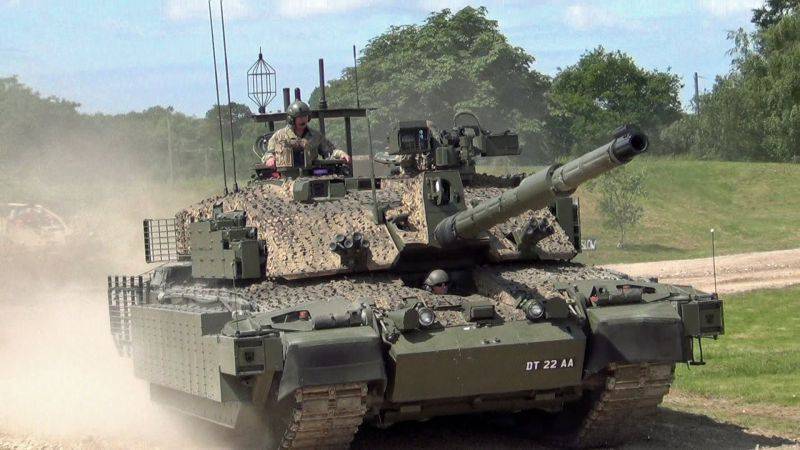
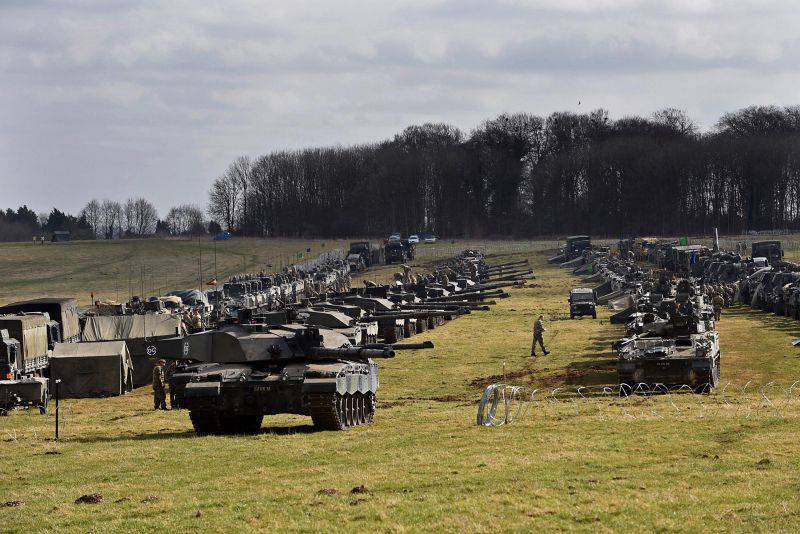
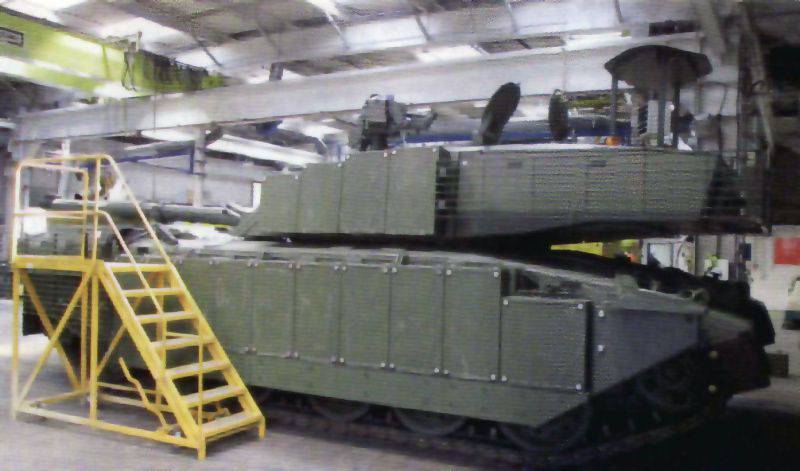
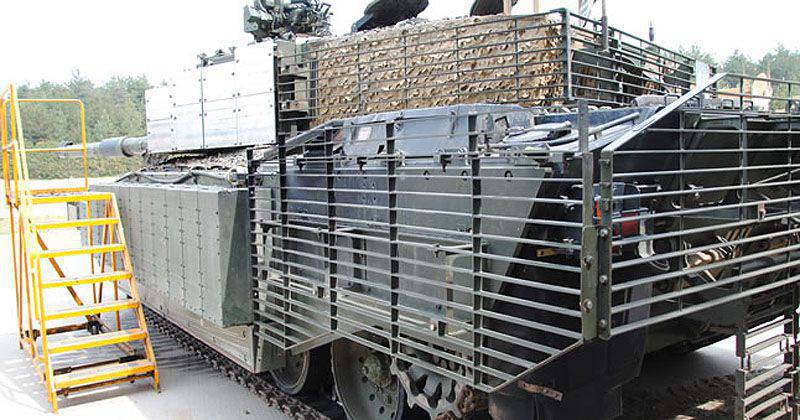
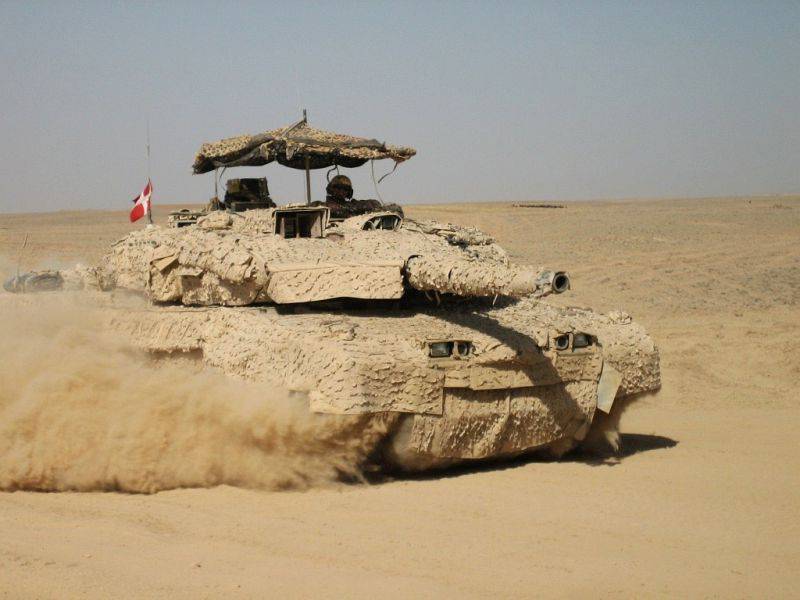
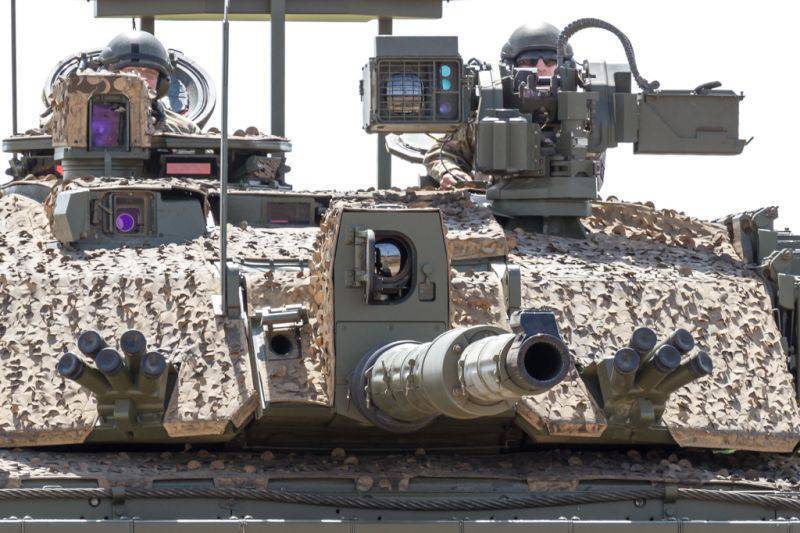
Information